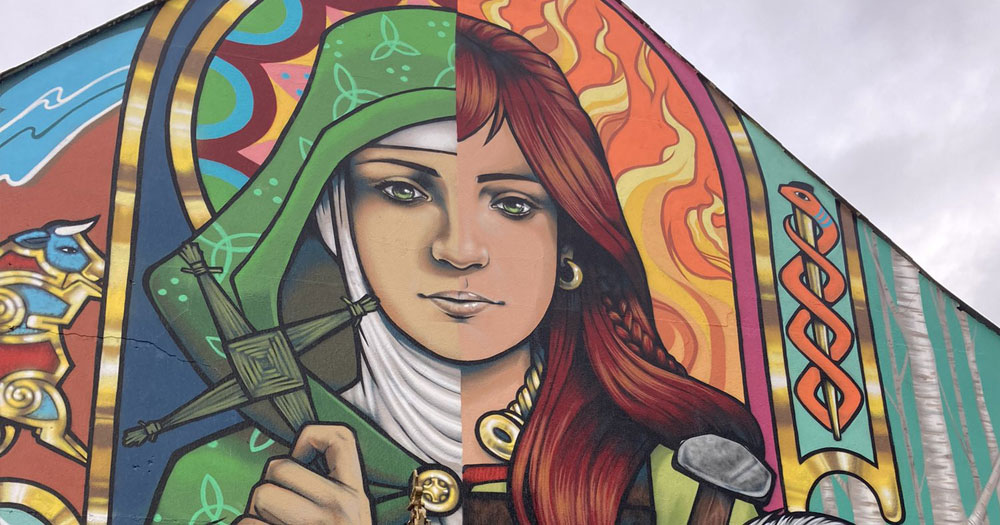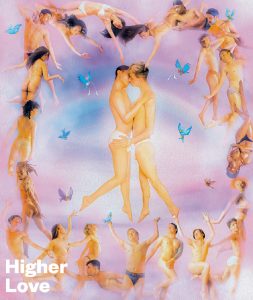“And then, as night fell cold and lonely across the Irish isle, a vigorous and strong-willed St Brigid wrapped her cloak around another, much younger woman by the name of Grace O’Malley, more commonly known in her own time as Gráinne Mhaol.
“These two women, both of great significance to Irishness and the conceptualisation of an independent, strong-willed, petulant womanhood held each other tight as darkness drew closer; their resistance to marriage and occupation of the domain of the masculine becoming more and more mythologised within the realm of #godly #girlboss femininity.”
The history of Ireland, both it’s colonial and postcolonial stories of nationhood, revolved around one’s propensity for incarceration, the ability of those in power, be it British colonial rule or more recently the Catholic Church and their governmental ‘cahooters’ to ostracise the ‘other’.
Whether that categorised ‘other’ be the colonised hiberno fiend, the devilish woman and single mother, the petulant child, or more recently those in our Direct Provision system, this is an issue that is structurally integral to the maintenance of Irish nationhood.
And while these issues have come to the forefront of public discourse, that conversation has revolved around the punishment of Irish womanhood; the martyr of Mother Mary, and her petulant, devilish daughters.
As the daughter of a single mother growing up in Ireland in the late ’90s and early 2000’s, I navigated the world around me highly influenced by a society that defined gender and sexuality in terms of one’s propensity for incarceration; abuse, and neglect.
I was acutely aware of my difference from others around me, and that only deepened as my position as a woman within Irish society was complicated by my identity as a non-binary lesbian.
My understanding of Ireland’s insatiable hunger for ostracisation, punishment, and neglect centred around my womanhood, my place within Irish culture as a girl and as the daughter of a single mother.
Ireland, however, has a broad and less binarised history of othering, which includes queer identities within its remit. In realising that I was a lesbian that Irish identity became wonderfully complex.
I began searching for queer legacy, idols, elders, and a history of my own. Naturally, I looked to America – perhaps in line with another Irish legacy (that of emigration, of spreading ourselves thinly out into the world), and what I found there was incredible, heartbreaking and profound. It rooted me.
I do not want, however, to be rooted only by my queerness. In the case of a country where ostracisation and incarceration is such a historically integral part of my perceived identity to begin with, I want to be rooted by my Irishness; by my Irish queerness, and the history of queer lesbians specifically in this country.
Where is our queer history? Perhaps I’m speaking more about that process, and about my journey towards finding an Irish identity that feels like home to me, one that encourages queerness, and honours the memory of other Irish lesbians and LGBTQ+ folk before me, than it is about the history itself.
As much as womanhood is integral to Ireland’s history and culture and our concept of nationhood, so too is queerness. In searching for a story that fits both of these intertwined identities, I have learned about everything from early Irish writings of sapphism, to Dyke Balls in the ‘90s, and I have felt immensely proud to be a Dyke myself. In reading an article by Katherine O’Donnell titled Irish Lesbian History: Searching for Sapphists, I learned of the earliest sapphic lesbianism that Ireland has (evidently) to offer; of St Brigid and her reproachful attitude to marriage, her frequent depictions in masculine dress, and even a rumoured “bedwarmer” Darlughdacha, whom she “forced to walk in shoes filled with coals when she [St Brigid] saw her look admiringly at a passing male soldier.” And while this may only be rumoured sapphism, with many scholars reading this rather as evidence of her devotion to God, I would much rather see her as a pioneering Irish queer; her my Mother Mary and me, her petulant, devilish daughter.
Perhaps more tangibly, in Orla Egan’s account of lesbianism in the late 20th century, I encountered a history that occurred alongside that abuse and incarceration which is so heavily the focus of public discourse in recent years, one with just as much vigour as its iconically important American counterpart. A history of dyke bars, with Lesbian Fantasy Balls, described as “the Irish lesbian scene and herstory in miniature” with “the freedom to express and explore and play with our fantasies.” And in one moment, I realised that there was an Irish queerness to which I belong and that queer history can be explicitly Dykish.
I want an Ireland full to the brim with queer rumours of St Brigid and her bedwarmer, Dyke bars, queer families, and queer children. I want an Ireland that centres queer, othered voices of ostracisation and incarceration. One that understands the significance of the abuse dealt to young women and mothers in this country, and that creates space for queer voices within that history. I want to know my story, my queerness, and the legacy of those who have paved the way for it, in the same way that I have understood the centrality of my perceived womanhood to Irishness; my understanding of nationhood.
I will say that while I may be Mother Mary’s petulant, devilish daughter, I will do it with a strap on if I may. I will forever be glad to be both Irish and queer, dreaming of fan fictions about Gráinne Mhaol and St Brigid warming each other under such an iconic and legendary cloak.
© 2022 GCN (Gay Community News). All rights reserved.
This article was published in the print edition Issue No. 367 (July 1, 2021). Click here to read it now.
Support GCN
GCN is a free, vital resource for Ireland’s LGBTQ+ community since 1988.
GCN is a trading name of National LGBT Federation CLG, a registered charity - Charity Number: 20034580.
GCN relies on the generous support of the community and allies to sustain the crucial work that we do. Producing GCN is costly, and, in an industry which has been hugely impacted by rising costs, we need your support to help sustain and grow this vital resource.
Supporting GCN for as little as €1.99 per month will help us continue our work as Ireland’s free, independent LGBTQ+ media.

